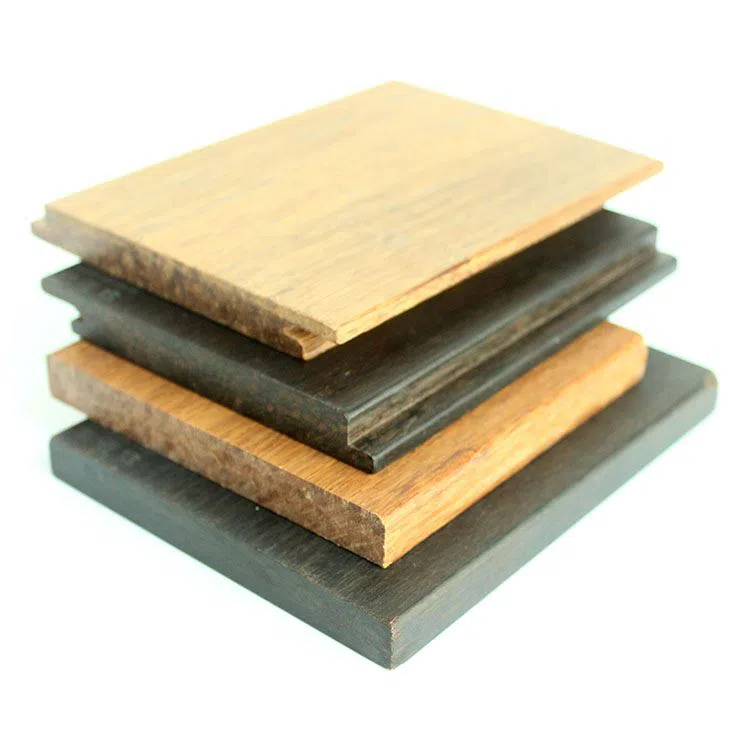
How To Choose Outdoor Materials
- 26 Sep 2023
- Industry News
As people's living standards improve, outdoor activities become more and more frequent, and parks and streets become people's favorite leisure venues, so there are more and more types of outdoor materials. However, in recent years, environmental pollution and shortage of forest resources are serious problems facing mankind. As bamboo is a product of environmental protection, bamboo materials have also emerged.
First, let's compare the advantages and disadvantages of several common outdoor materials.
1. Carbonized wood
The surface of the wood has a dark brown aesthetic effect, and has the effects of anti-corrosion and bio-invasion. Its moisture content is low, it is not easy to absorb water, the material is stable, not deformed, completely degreased and non-greased, good thermal insulation, simple construction, no special odor , Is an ideal sauna material, its surface carbonized layer can be compared with wood paint, and highlights the uneven surface of the wood grain. The deep carbonized anticorrosive wood has the same color inside and outside, Fan soft silk-like luster, the texture becomes clearer, the hand feels warm, and the processing performance is good, overcoming the defects of the product surface fluff.
The disadvantage is that carbonized wood is not suitable for environments that contact soil and water. Compared with untreated materials, the nail holding force is reduced, so it is recommended to use punching and nail hole installation to reduce and avoid wood cracking. At the same time, it is recommended to use anti-ultraviolet wood oil for outdoor use to prevent the wood from fading after a long time.
2. Plastic wood
Plastic wood, also known as "wood-plastic composite material", can be understood as a material that mainly uses plastic as a raw material to replace wood. It is made of plastic and wood chips in a ratio of approximately 1: 1. Its large number of applications can save a lot of natural wood, which is conducive to protecting the ecological environment. Because of the composition of natural fibers, plastic wood has better UV performance and lower thermal expansion and contraction performance.
Although it is similar to wood visually, there are still differences in the characteristics and touch of natural wood, such as monotonous texture and single color. Compared with wood, it cannot be processed at will, and specific shape specifications need to be customized.
3. Antiseptic wood
In the face of the harsh external environment, ordinary wood cannot resist the erosion of mold, rain, etc., and it is very easy to rot. The preservative wood after the wood is poisoned with preservatives can prevent wood decay bacteria from decaying the wood. The antiseptic agent invades the wood tissue cells and mixes closely with its cell fiber tissues, and the agent will not be released. Due to the infusion of chemicals during the pressurization process, the wood will have a slightly greenish chemical color and uneven color. The color difference is large and dull. With the loss of chemical reagents, it is easy to become gray and black, and generally not taken Secondary drying, the wood itself has a high moisture content, so it is prone to deformation and cracking problems.
4. Bamboo
The outdoor high-resistance bamboo and wood material is a new high-tech outdoor material with high wear resistance, corrosion resistance and high stability. The compressive strength of bamboo of the same size is 2 times that of ordinary wood, and the tensile strength is 8-10 times that of ordinary wood. It is suitable for ground and wall decoration in a variety of outdoor environments. It has high wear resistance and corrosion resistance. There are also termite-resistant, fire-retardant, and high hardness, which are excellent outdoor materials. The excellent size, high stability, high compressive strength, and high density make it easy to deal with the harsh outdoor damp heat, dry and cold and other special environments. Due to the late start of such materials, the cost is relatively high. During the production process, no colorants are added, which emphasizes the natural environmental protection of bamboo. Therefore, its color is single, generally brown and brown.
Therefore, in summary, bamboo is the first choice for outdoor environmental protection materials, and its performance in all aspects is outstanding. In the future, bamboo will become the leader in construction materials!

